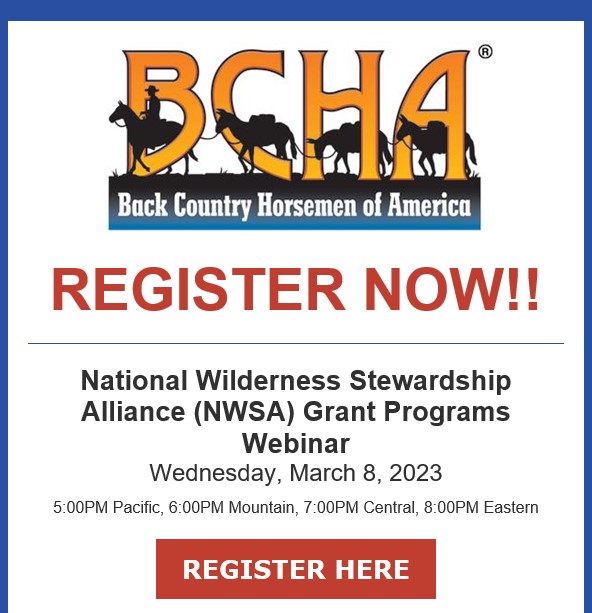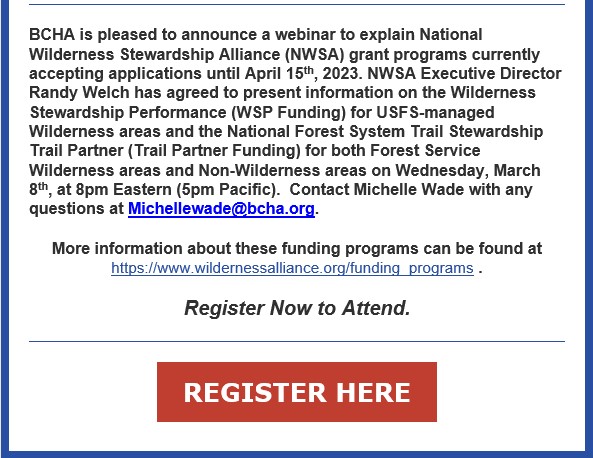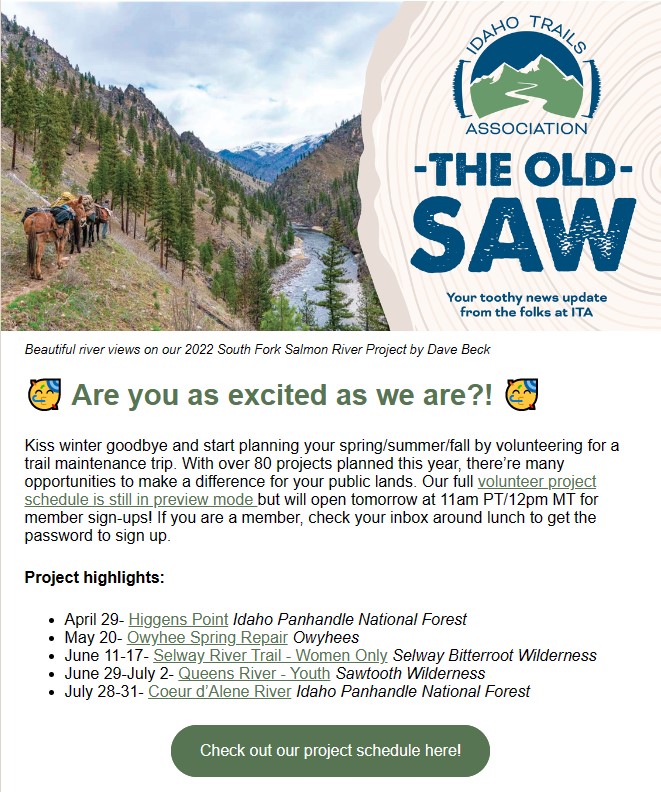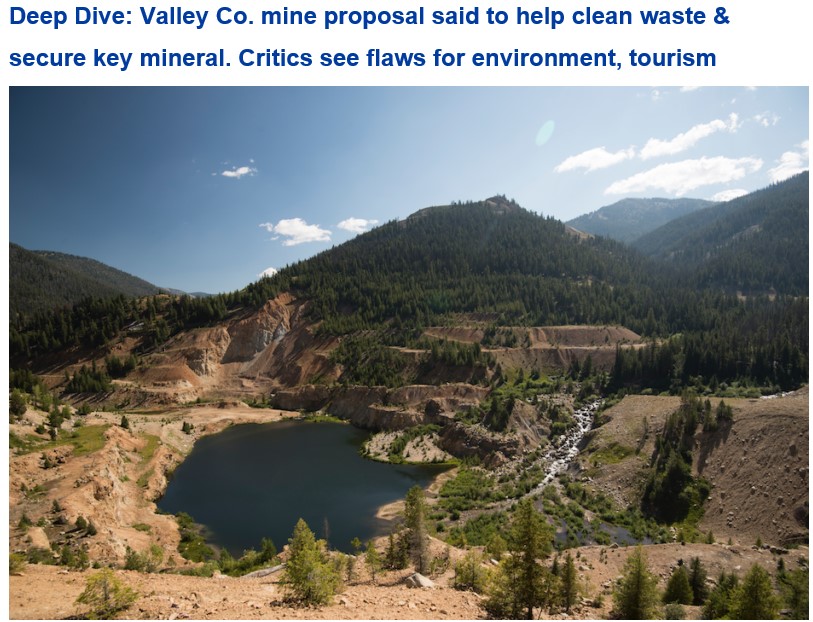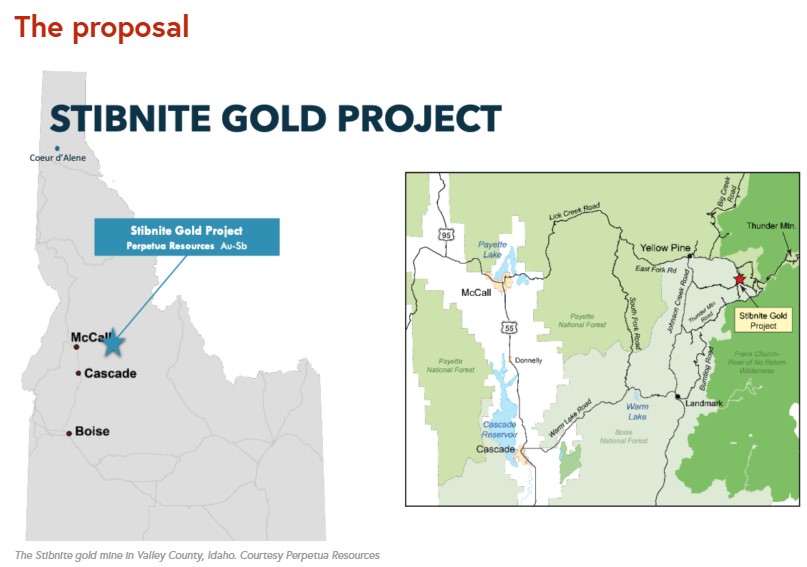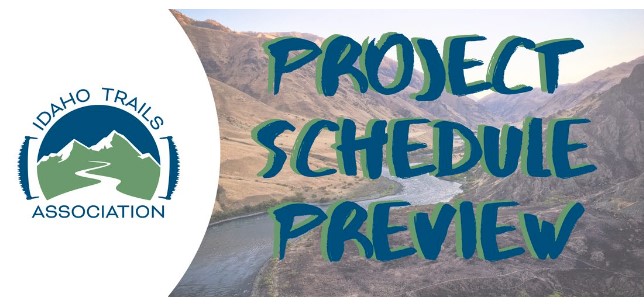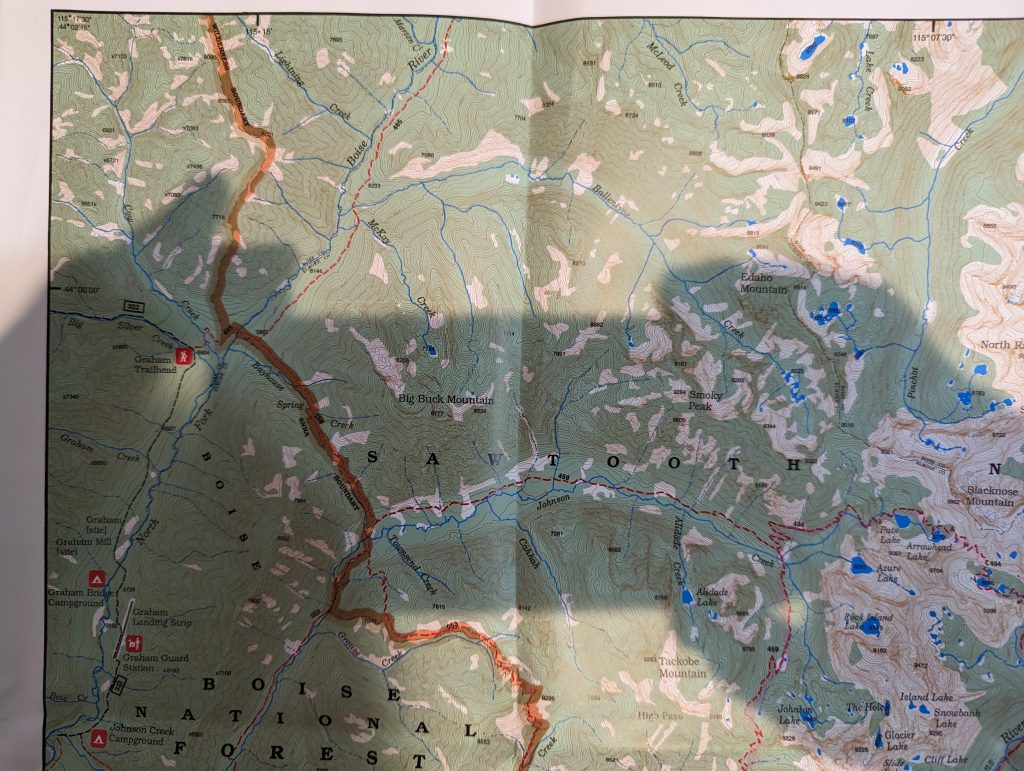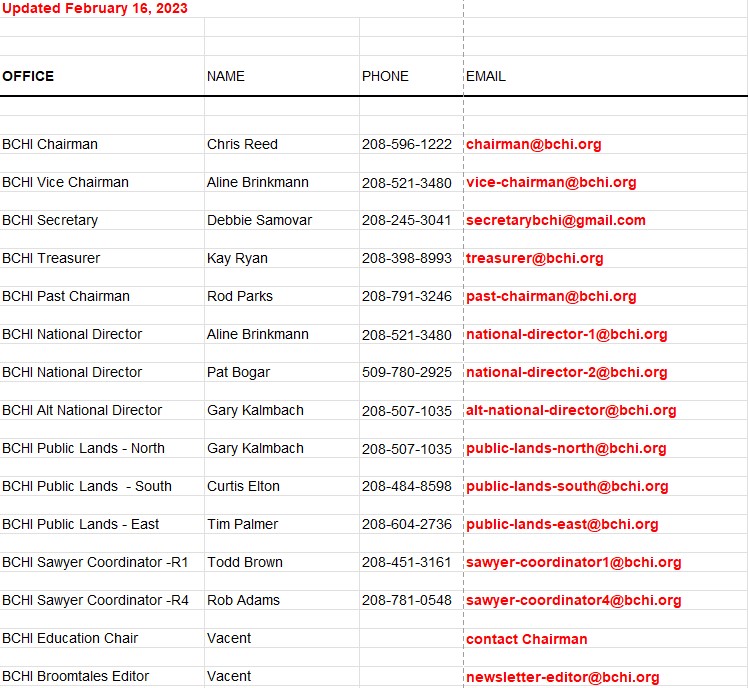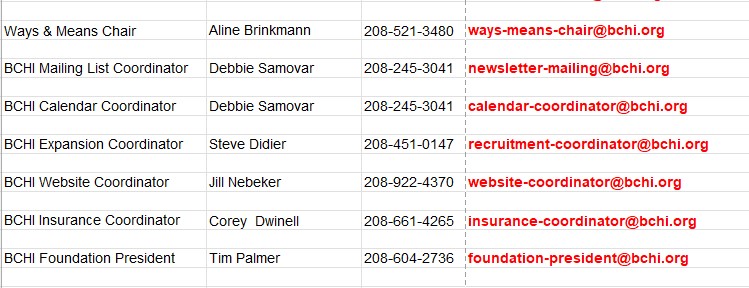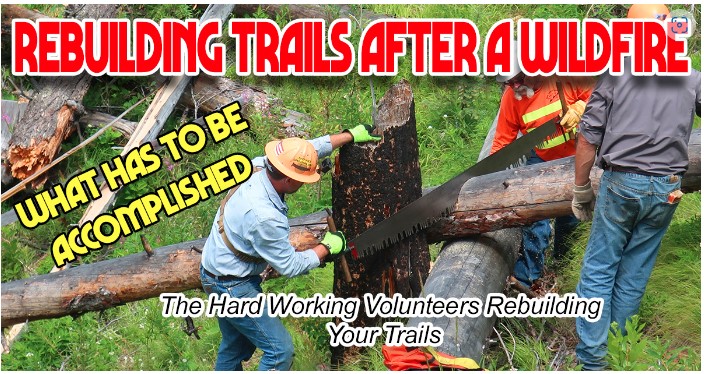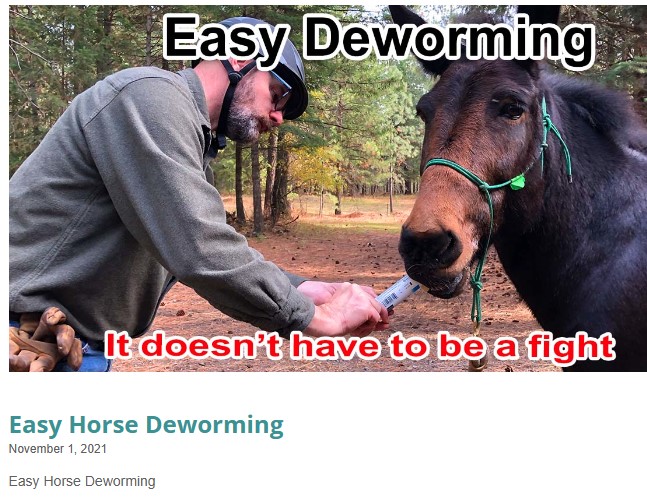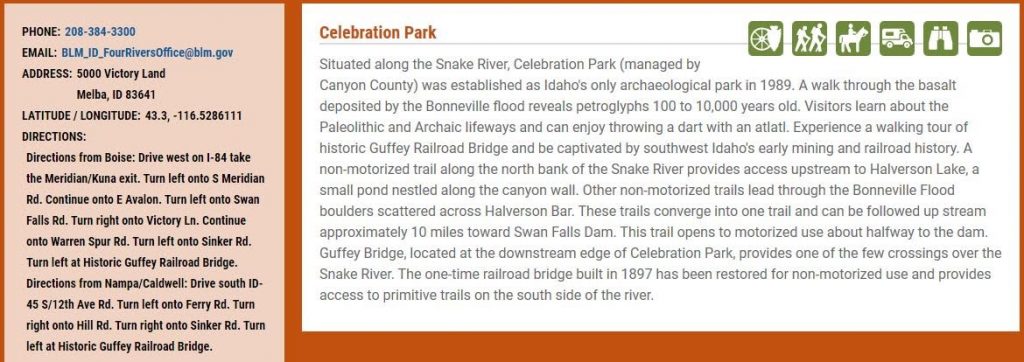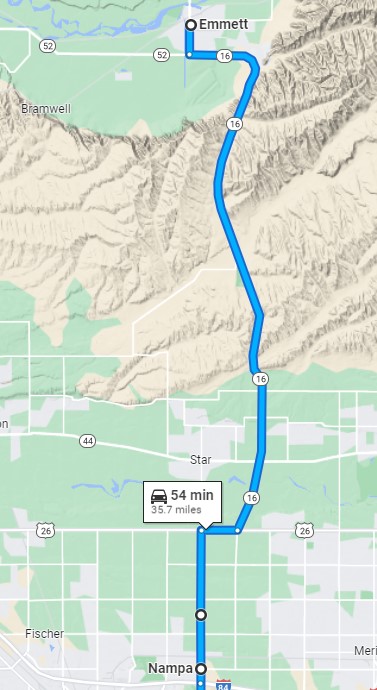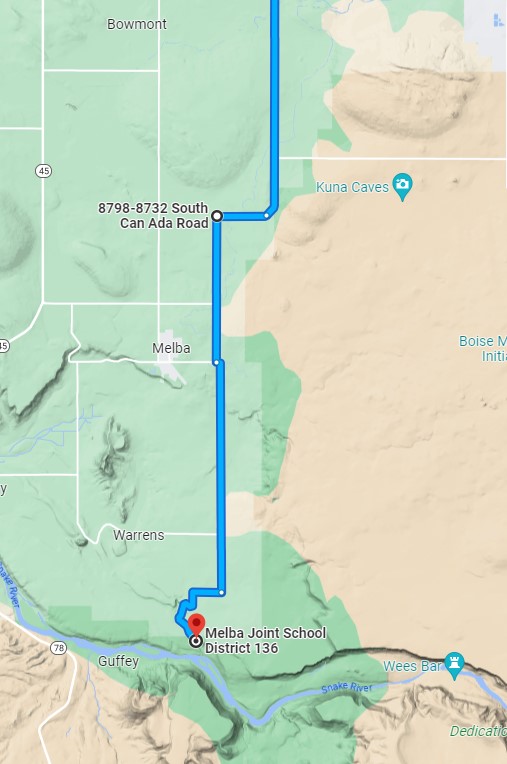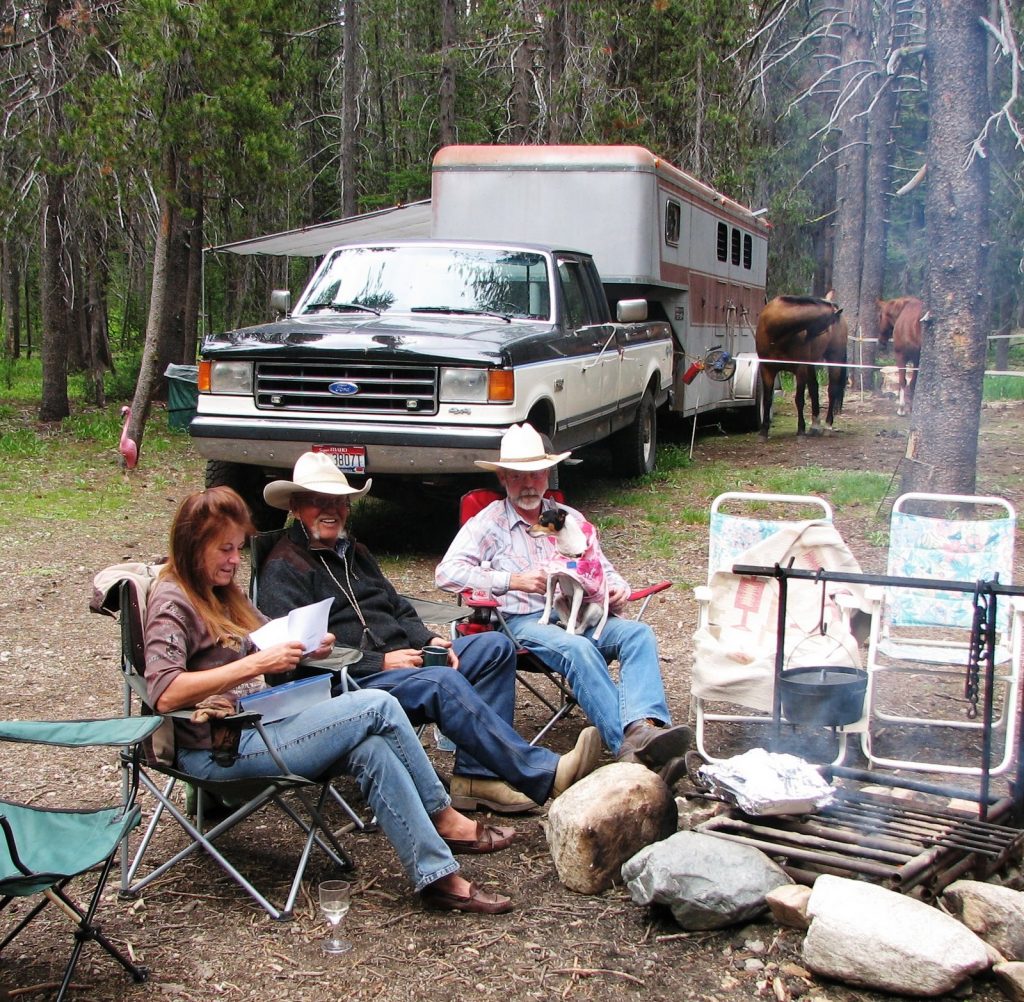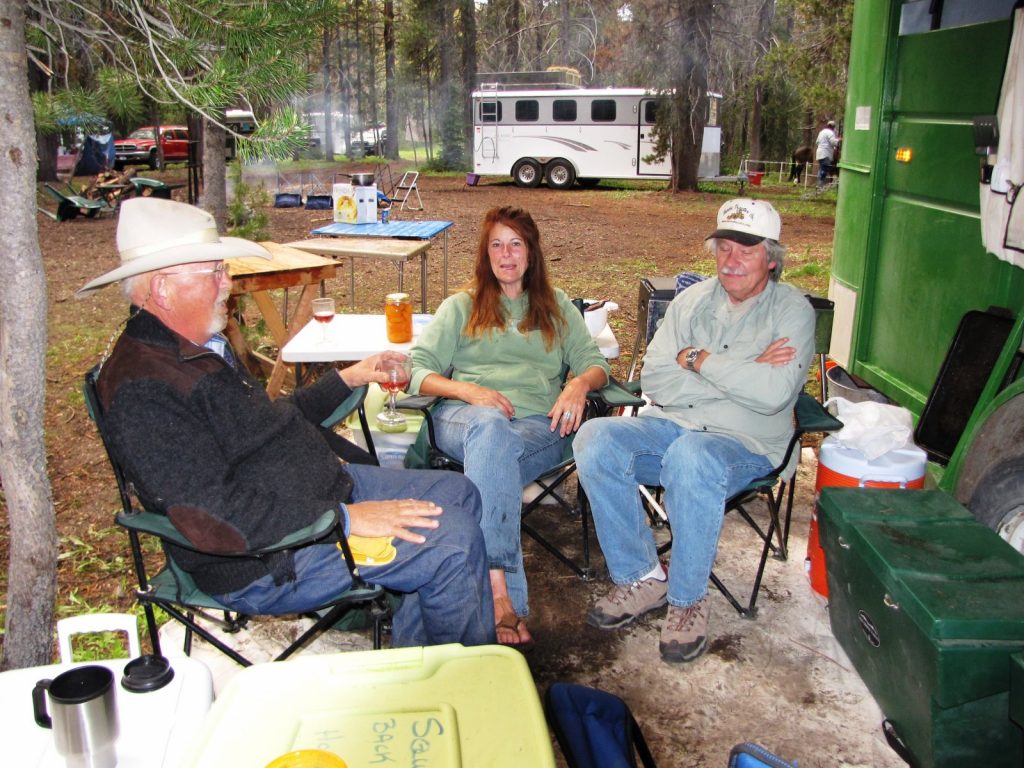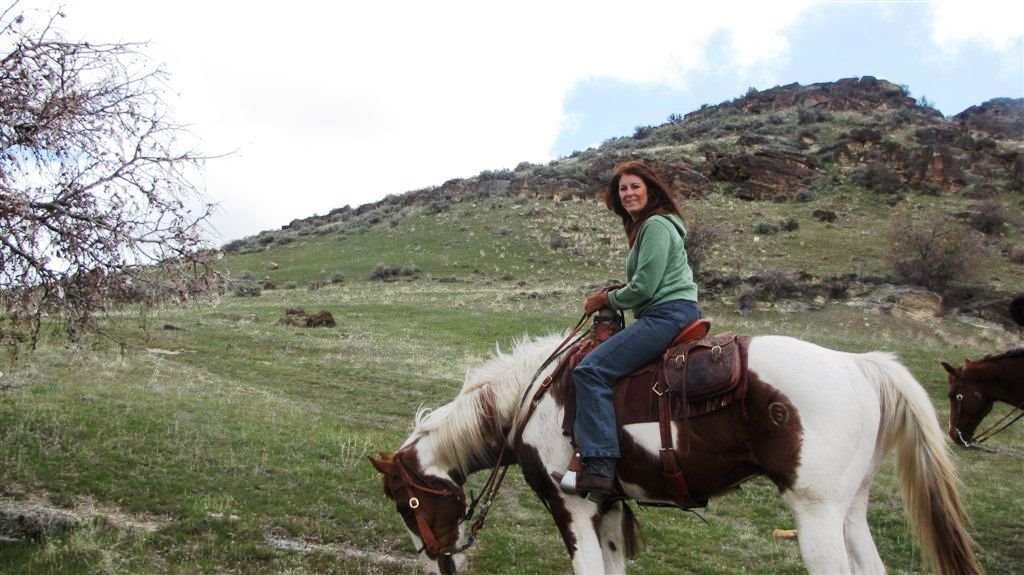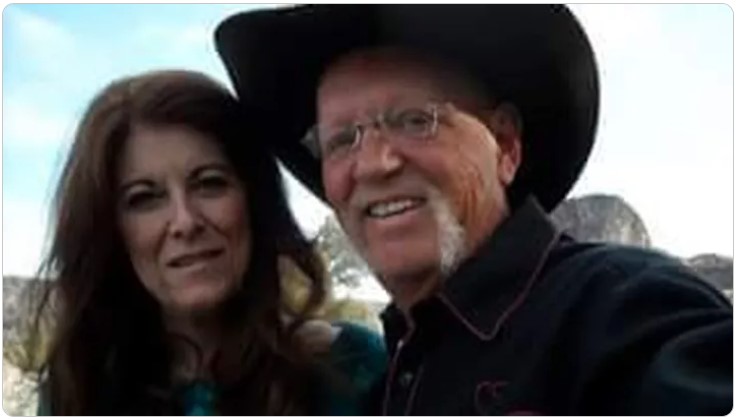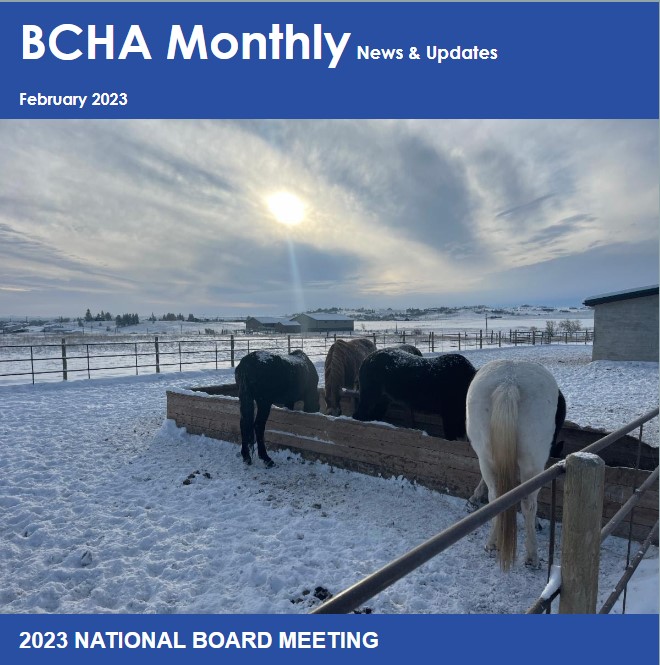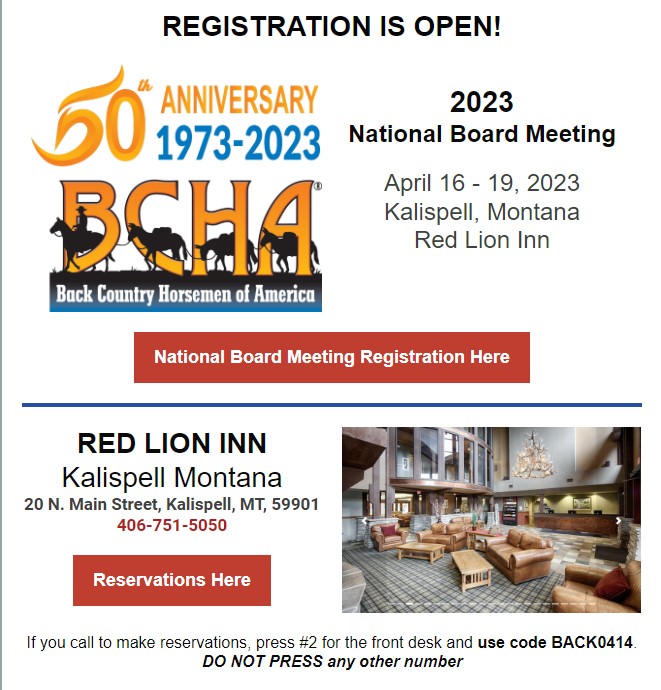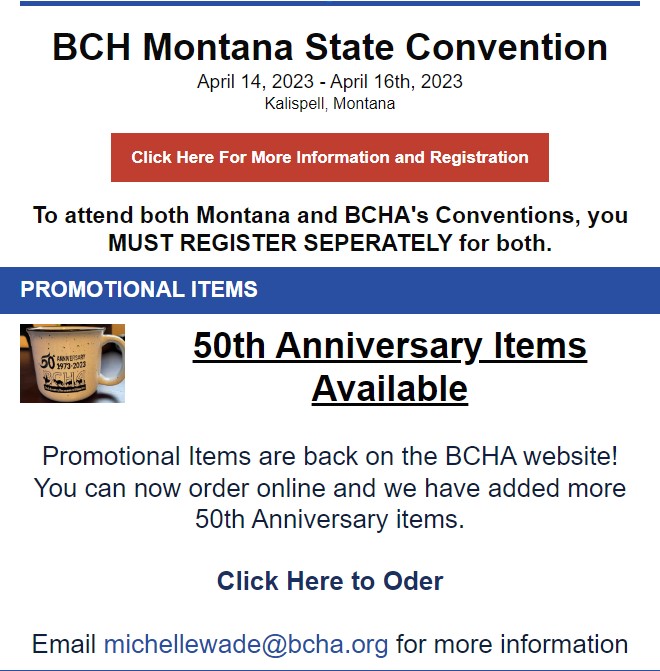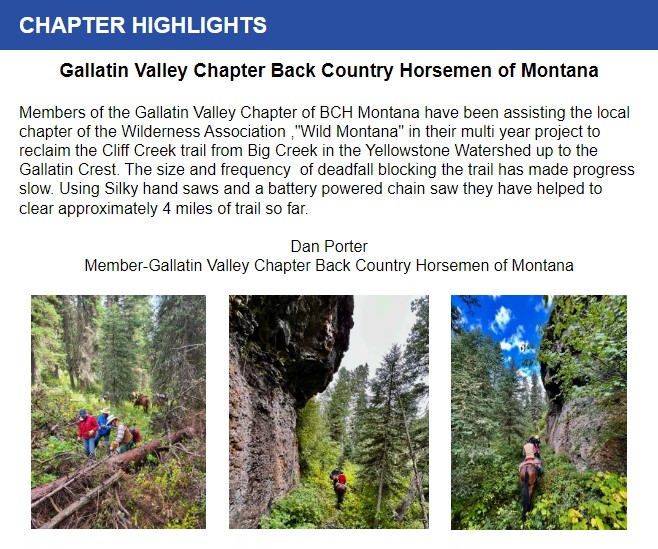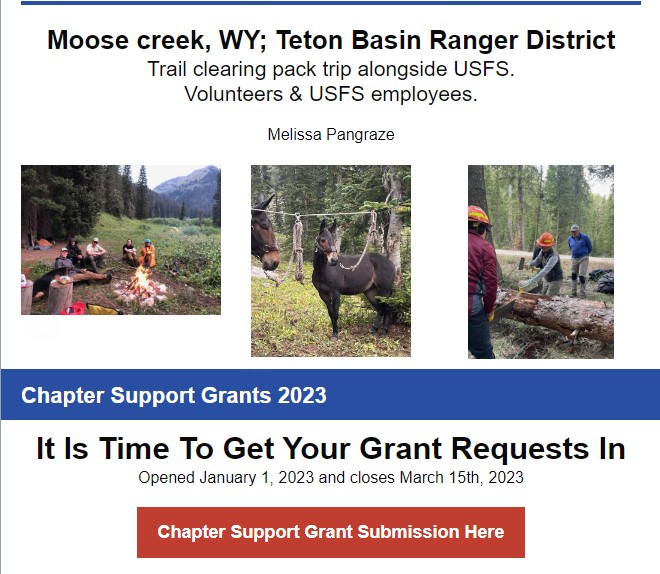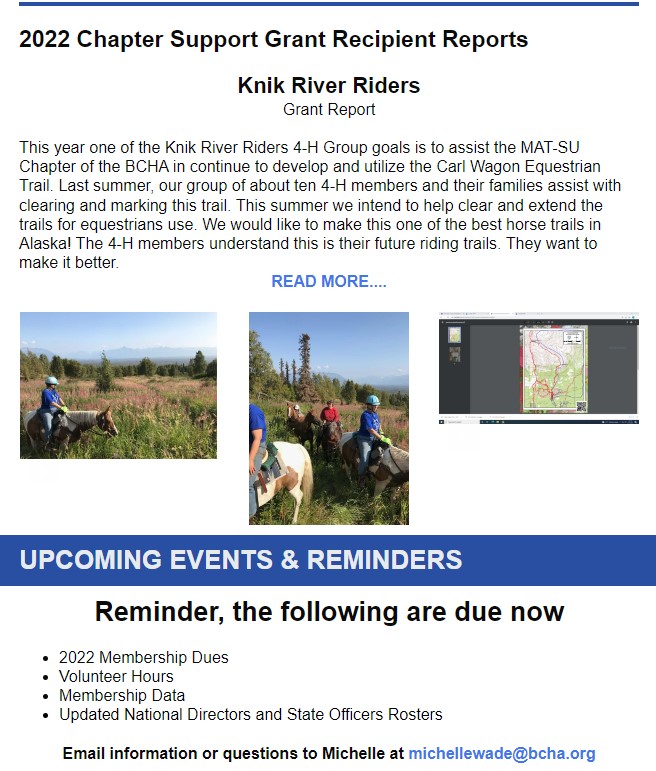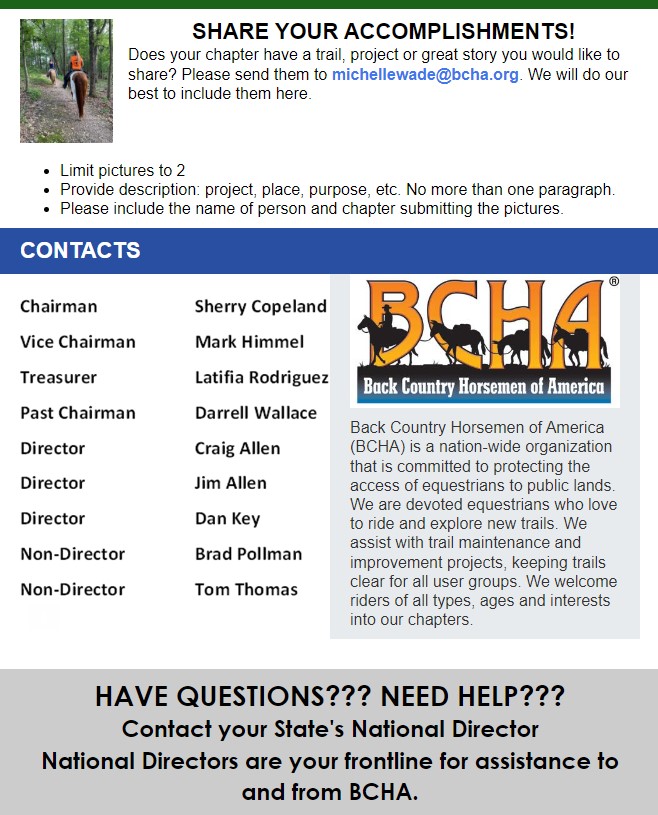Tucked in the mountains of Valley County in a small town just east of Yellow Pine is the Stibnite Mine District. The district was mined for more than 100 years, dating back to 1899 before closing. Now, a proposed project looks to reopen the mine.
Perpetua Resources, formerly Midas Gold, wants to open the mine again with the Stibnite Gold Project to primarily mine for gold and antimony but also some silver. Antimony is commonly used to make bullets and batteries.
According to Perpetua Resources, during World War II, Stibnite Mine District provided 90% of the antimony and 50% of the tungsten for the U.S. The site was mined up until 1996 but has since sat vacant.
After years of project refinement and 10,000 public comments following the Forest Service’s Supplemental Draft Environmental Impact Statement, or SDEIS, Perpetua’s Modified Mine Plan was released to the public.
The Stibnite Gold Project is weighty, encompassing more than 1,700 miles. Perpetua wants to clean up the mining district that has tailings and waste from decades ago and again give the U.S. access to a critical mineral. But opponents say this project would further damage the environment. And Valley County officials are split on whether the mine would help or hurt the area.
The day is here! We are excited this year to offer you a preview of 2023 projects one week before they open for signups. With over 80 projects planned ranging from one-day opportunities near towns like Sandpoint, McCall, Boise and Pocatello to our first-ever three-week-long Wilderness Immersion trip, there is something for everyone! We have projects open to all, projects for youth, veterans, and women, and projects focusing on the Idaho Centennial Trail. Volunteers can backpack, drive, fly, jet boat, or watch their gear loaded on mules as they set out on their public land stewardship adventure.
No matter the trip you choose, you are sure to meet other volunteers of all ages and backgrounds and share in the camaraderie of clearing Idaho’s diverse and beautiful trails, creating memories and building friendships. Volunteers do not need to have previous trail work experience to join. We’ll bring the tools and teach you everything you need! Read our FAQs to learn more about what volunteering on a trail crew is like.
On March 1, the project schedule will open for member signups at 11am PT/ 12pm MT. Learn more about becoming a member here. The schedule will open on March 15 for the public. If you are an ITA member, keep an eye out for an email on March 1 with your password for signing up.
Grab a beverage and your laptop, kick your feet up and enjoy a week of perusing the 2023 project schedule. Reach out to trails@idahotrailsassociation.org with questions. Make a list of your favorite projects and get ready to hit “Sign Me Up” in one week! Can’t wait to see you on the trail.
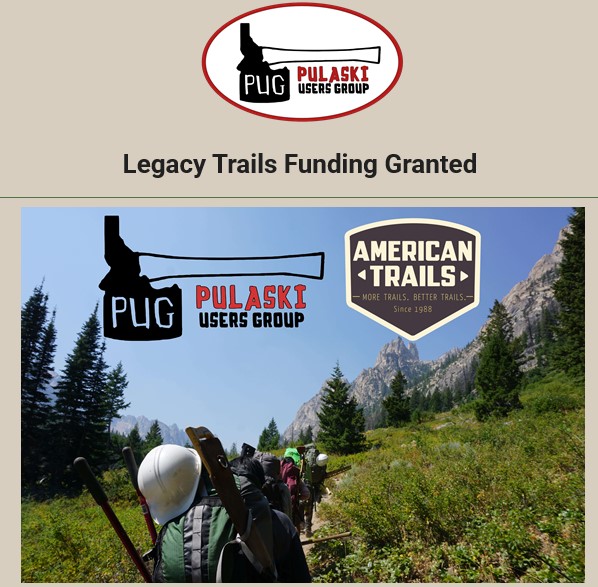
.We are very excited to announce that the Pulaski Users Group has been awarded funding from American Trail’s Legacy Trails Program. PUG has been awarded $48,000 from the Legacy Trails Program, administered by American Trails, for the re-establishment of the Johnson Creek area in the Sawtooth National Recreation Area (SNRA).
This funding will allow us to re-establish a number of USFS system trails starting from the Graham Trailhead on the northwestern side of the Sawtooth National Recreation Area (SNRA) up to Pat’s Lake. These trails provide alternative access to the remote and very wild western portion of the SNRA. The Johnson Creek Trail portion to Pat’s Lake has not received maintenance, Forest Service or other, since the 1990’s, and is in desperate need of attention. The lack of a clearly defined trail is promoting user created trails and river crossings which is negatively impacting the watershed. This project will benefit recreational users, future wildland firefighting efforts, and limit sedimentation and erosion. PUG crews will work closely with USFS staff over the course of the next two summers on this project.
Trail Descriptions: GrahamTH-JohnsonCreek-PatsLake
Interested in learning more or want to volunteering on this project? Shoot us a message! PRESS RELEASE
Rebuilding Trails after a Wildfire
Rebuilding Trails after a Wildfire
Unfortunately, it’s a story that repeats itself every year—wildfire racing across the landscape. As forests burn, post-wildfire recovery is becoming the norm for trail maintainers across the U.S. as these fires take a toll on popular recreation areas and natural resources. Rebuilding trails is imperative for continued use.
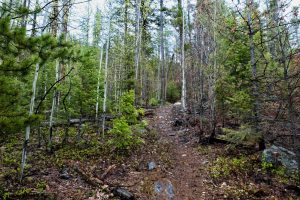 The devastation that comes when you learn of a wildfire burning in a beloved area that holds fond memories is traumatic. Fires can mean a tragic loss of lives or homes. And we’re left wondering what the area will look like once the flames are extinguished. Fire changes an environment; understory vegetation is destroyed, trees are torched, and trails become moonscapes of ash.
The devastation that comes when you learn of a wildfire burning in a beloved area that holds fond memories is traumatic. Fires can mean a tragic loss of lives or homes. And we’re left wondering what the area will look like once the flames are extinguished. Fire changes an environment; understory vegetation is destroyed, trees are torched, and trails become moonscapes of ash.
Wildfire is an essential part of a natural landscape. But it is undeniable that wildfires can negatively impact outdoor recreation resources. In these cases, post-fire restoration can be crucial to prevent further damage and spur recovery.
The already astronomical price tag of wildfire suppression is projected to increase over the next decade. It comes at a cost to other Forest Service programs. Most of the Forest Service’s budget is spent fighting fires, not restoring those acres that have burned. Volunteer efforts are needed to maintain fire-damaged trails.
In the past several years, fire recovery has been an increasing part of Back Country Horsemen’s work to keep trails open and accessible for equine use. BCH crews work closely with land managers to ensure that trail maintenance positively impacts landscapes after a wildfire.
The Work that is Done
If you’re unfamiliar with trail work and rebuilding trails, you might be wondering, “What sort of work is needed on trails after a wildfire, and why is that work so important?”
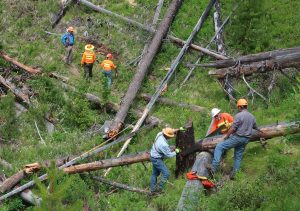
When a BCH volunteer team attacks a fire rehab project, the first order of business generally includes removing blow-downs from the trail corridor. Fire-scorched trees with compromised root systems tend to topple due to wind and weather, making it very challenging for those on horseback to get down the trail. Riding around sections of blow creates a maze of “social” trails, increasing erosion of the main throughway. By clearing blow down, we’re making the ride more manageable and more enjoyable, and keeping all users on the same path reduces the impact on the land.
Once the deadfall is removed, tread and erosion control measures are tackled. “Tread” is the trail – the hardened surface our ponies travel on. Tread, as all horsemen know, is frequently studded with roots. Many of those roots burn during a fire, leaving dangerous holes in the tread. Sweating BCH volunteers fill each of those holes to keep the trail safe for stock use.
Erosion control measures are undertaken once the deadfall is cleared and the holes filled. Post-fire trails without these structures can soon turn into vast trenches where the sides of the trail brush against your horse’s belly. These constructions are built with native stone, timber, and sweat.
How You Can Help
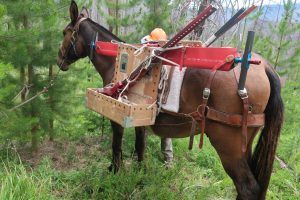
Once you understand the work that must be accomplished after wildfire rolls through, it’s essential to appreciate how it is executed. Many BCH volunteer work projects take place in designated Wilderness, where only non-motorized tools are permitted. Wilderness trail work takes you back to a time before mechanization. Fallen trees are removed with crosscut saws powered by muscle, trail tread is re-built with well-worn picks, and water bars are installed with shovels and grit.
The sweat-stained clothes of trail crew volunteers remind us that repairing trails after a wildfire is hard work. Still, the miles of new and improved trails are a valuable reward to every trail user. Please think of the efforts that volunteers put into keeping your trail system open. Consider helping keep your trails open by joining a trails advocacy organization, such as Back Country Horsemen. Even if you don’t have the horsepower to muscle a Pulaski, you can still assist in many ways. Trail work support can be helping coordinate resources and calendars to feeding the volunteers at a base camp.
Deworming used to be an ordeal that neither the horses nor I enjoyed. I would sneak up to the horse, grab the halter tight, and jam the dewormer tube in his mouth. It was a vain attempt to get the job done quickly before the inevitable fight. Not only did this make the horse defensive, but it also made the process downright dangerous. Deworming days were dreaded by all involved. It doesn’t have to be.
I now look at deworming as an ongoing process, not an event to be avoided. If you take the time to make administering oral medications a regular part of your routine, the process can become much more manageable and worry-free. My goal is for deworming to be a casual kind of event. No worries, no fuss, and most importantly, no drama. Here’s how I get my animals to relax and accept their meds.
1 – Accept the Tube
The first step is getting him used to having the tube around him. I rub an empty applicator all over him. If he fights it, I hold the tube on him until he stops resisting then I take it away. Approach and retreat are key here. As soon as the horse stops moving, I remove the tube. I’ve had horses where at first, I couldn’t even approach them with the tube. In those cases, I start by just standing near them and then slowly progress to touching them. Take your time and be relaxed.
2 – Add the Sweet Stuff
Once your horse can tolerate having an empty tube resting on his face without any fuss, it’s time to up the ante and ask him to take the tube in his mouth. It helps to have the tube filled with something good. I like using applesauce. Fill an empty dewormer, or a similar type of tube, with applesauce. Don’t bother wiping off any residue. Gently place the tube near the horse’s mouth so he can smell and taste the applesauce on the outside. Once the horse learns that the tube contains something yummy, you’ll be able to gently depress the plunger and squirt the contents into his mouth. Repeat this practice “deworming” with the good stuff until the process is smooth and easy. When my horses see a deworming tube now, they come running for their treat.
3 – Deworm
Once your animals are excited and happy when they see the deworming tube, it’s time to use something that reduces internal parasites better than applesauce. Now is the time to use a little deception and then a lot of apologies. Before heading out with a real dewormer, I smear the outside with applesauce and fill an empty tube with applesauce. The coating on the outside of the real dewormer will help disguise the foul smell and taste until it’s too late, and the applesauce-filled tube serves as an apology. Always end on a positive note. If you administer the nasty medication and finish the process there, your horse will remember it longer than you.
4 – Return to the Sweet Stuff
To reinforce the idea that 99.9% of the time a dewormer tube is a good thing, I follow up with applesauce shots for the next few days after applying a real dewormer. Until once again, the ponies come running when they see the tubes. Once a month, I break out the applesauce tubes to keep the good vibes going.
I rely on my horses and mules to get me into wild and fabulous places. Part of preparing them for that requires regular preventive medical care, including deworming or administering any oral medications. I want my animals to trust me. I work towards that goal by making what used to be an unpleasant experience something to be enjoyed.
For more practical information on trail riding and camping with horses, visit me at www.TrailMeister.com. From the TrailMeister website, you can not only surf the world’s most extensive guide to horse trails and camps, but you can also order my new book, The ABCs of Trail Riding and Camping with Horses. With 178 topics, oer 315 pages, covering Essential Knowledge for horse owners, from training tips to outdoor skills to increase your safety and fun on the trail and in camp. Here’s the link https://amzn.to/3CuErid
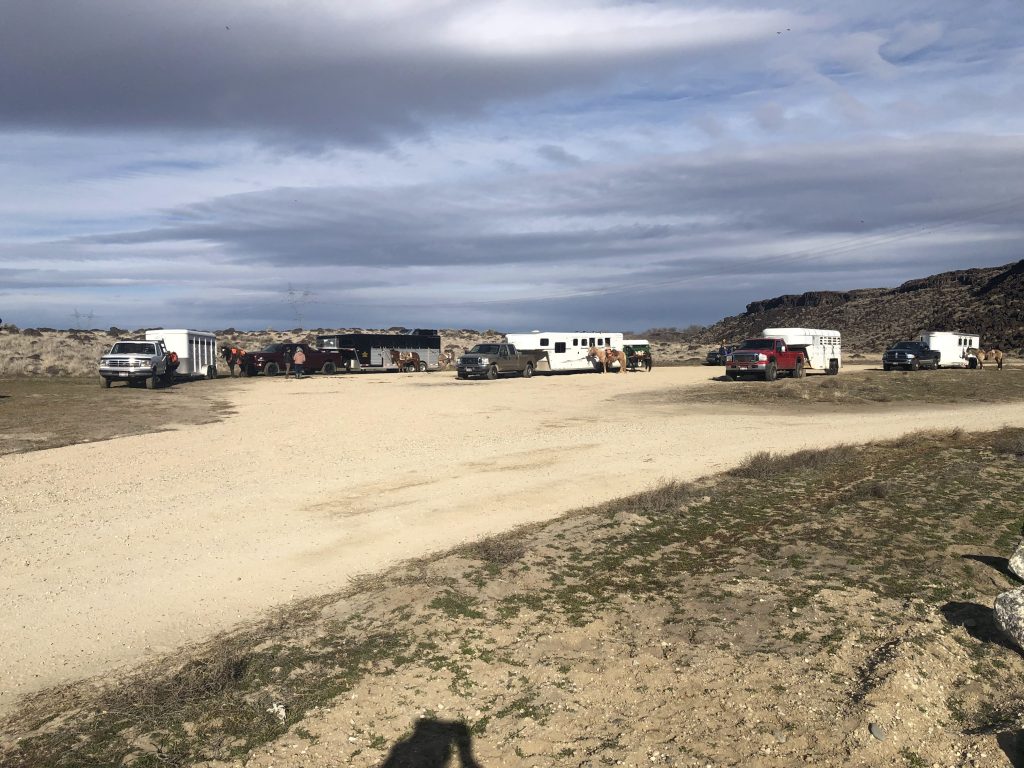
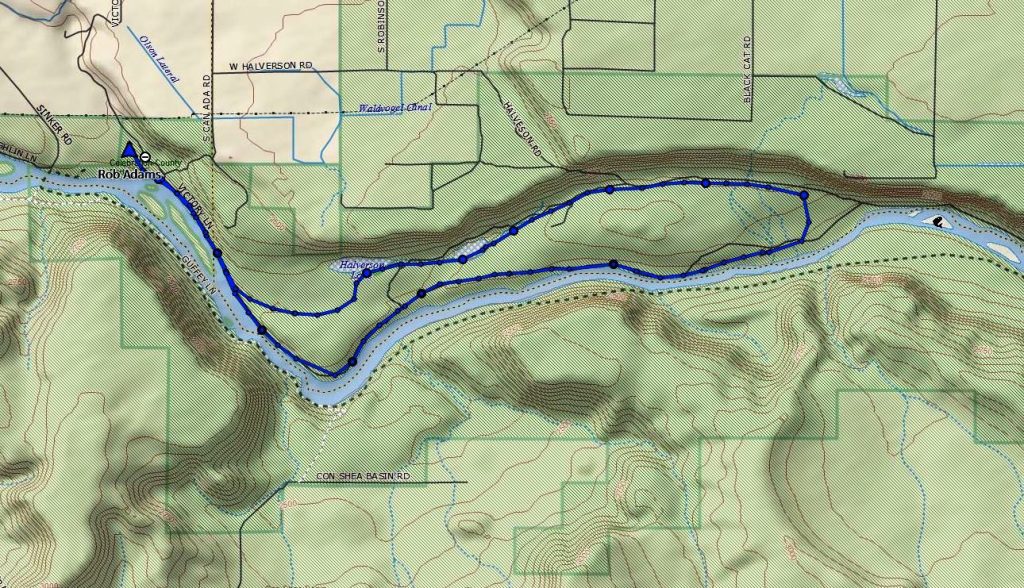
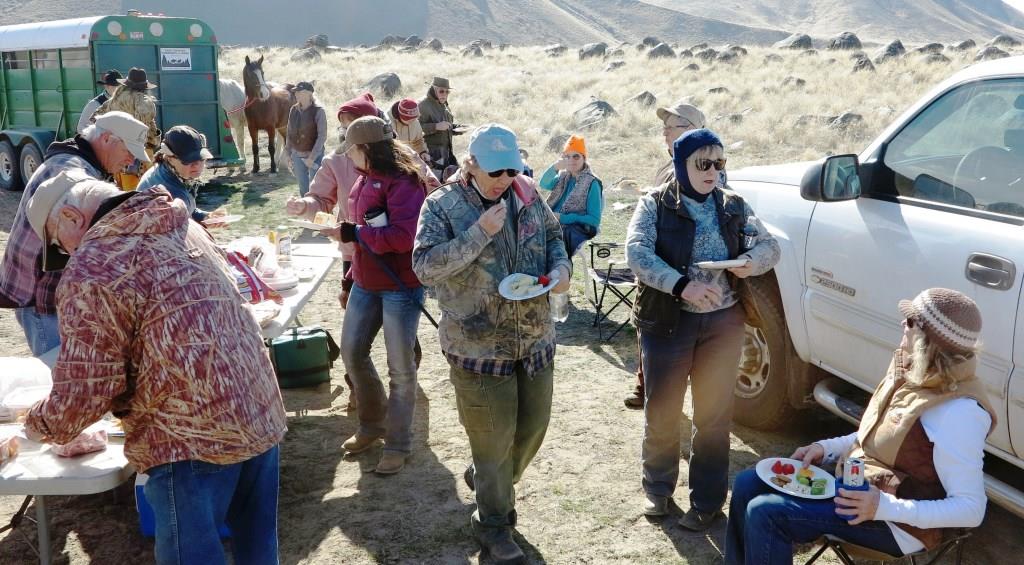 The recommended route from Emmett to the park is to take Highway 16 down to the intersection with Idaho 20-26. Turn right and drive to Robinson Road. Take Robinson road south all the way to it’s intersection with CAN-ADA Road. Turn LEFT (South)
The recommended route from Emmett to the park is to take Highway 16 down to the intersection with Idaho 20-26. Turn right and drive to Robinson Road. Take Robinson road south all the way to it’s intersection with CAN-ADA Road. Turn LEFT (South)
Continue down CAN-ADA to Victory Lane, you will see the “Second Sign” pointing to the park, Turn RIGHT and follow it to the trailer Parking area.
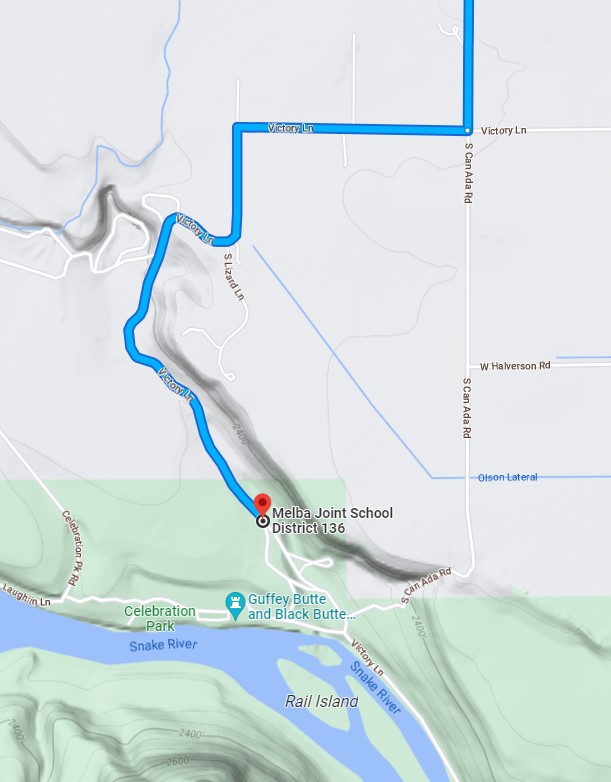
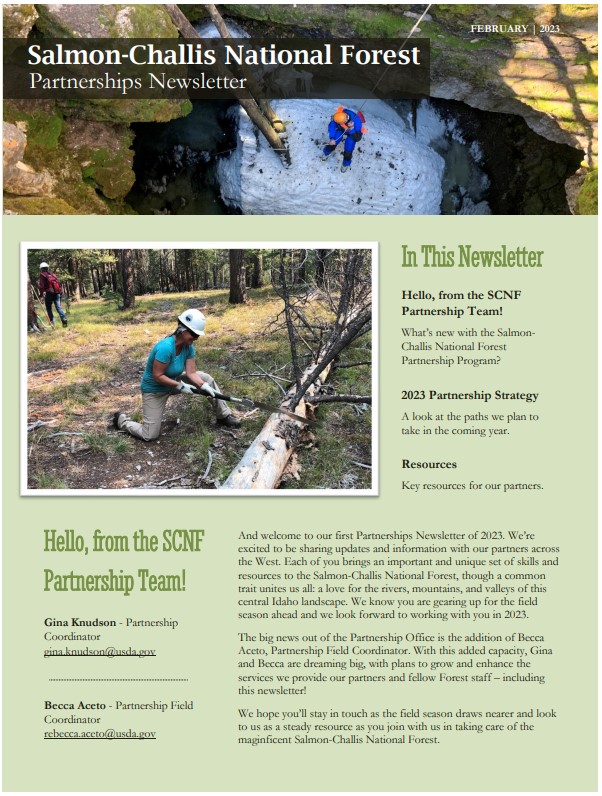 READ MORE: SCNF Partnerships Newsletter Feb 2023
READ MORE: SCNF Partnerships Newsletter Feb 2023
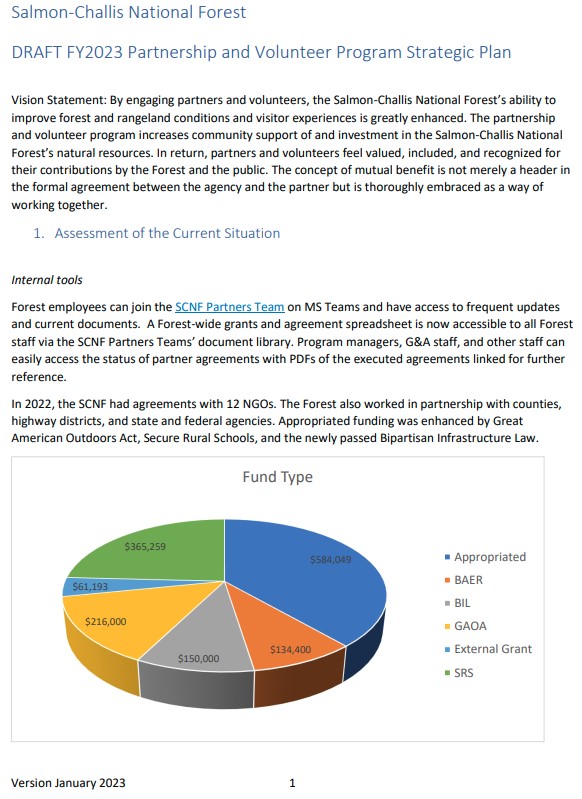 READ MORE: SCNF Partnership and Volunteer Program Strategy FY 2023
READ MORE: SCNF Partnership and Volunteer Program Strategy FY 2023

